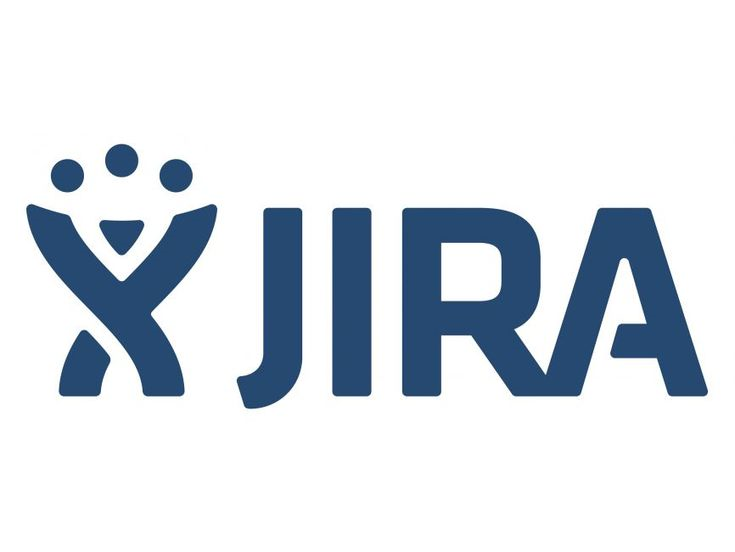This guide will walk you through setting up a custom Kanban dashboard in Jira with real-time KPIs (Cycle Time, Throughput, Assignee Workload, Bug Metrics, and more).
Table of Contents
Final Dashboard Layout Example.
Advanced JQL Queries for Custom Kanban Dashboard Filters in Jira.
Advanced Jira Dashboard Configuration Package.
Let’s do it
Step 1: Create a New Dashboard
- Go to Dashboards → Click “Create Dashboard”.
- Enter a Name (e.g., “Software Dev Kanban Dashboard”).
- Set Permissions (Team-managed/Company-managed).
- Click “Create”.
Step 2: Add Essential Widgets for KPIs
📊 1. Cumulative Flow Diagram (CFD) – Bottleneck Analysis
- Purpose: Visualizes work distribution across columns.
- Steps:
- Click “Add Widget” → Search for “Cumulative Flow Diagram”.
- Select your Kanban Board.
- Set Date Range (Last 30 days).
- Click “Save”.
⏳ 2. Control Chart – Cycle Time Tracking
- Purpose: Measures how long tasks stay in each column.
- Steps:
- Click “Add Widget” → Search for “Control Chart”.
- Choose your Kanban Board.
- Set Filters (e.g., issuetype = Task).
- Click “Save”.
🚀 3. Throughput Report – Tasks Completed Per Day
- Purpose: Tracks work completion rate.
- Steps:
- Install “ActionableAgile” (if not available).
- Click “Add Widget” → Search for “Throughput Chart”.
- Select Board and Timeframe (Last Sprint/Last Month).
- Click “Save”.
👥 4. User Workload Pie Chart – Assignee Distribution
- Purpose: Shows task allocation per team member.
- Steps:
- Click “Add Widget” → Search for “Pie Chart”.
- Set Filter (status != Done AND assignee is not empty).
- Group by “Assignee”.
- Click “Save”.
🐞 5. Created vs. Resolved Bugs – Defect Tracking
- Purpose: Measures bug resolution efficiency.
- Steps:
- Click “Add Widget” → Search for “Created vs. Resolved”.
- Set Filter (issuetype = Bug).
- Choose Time Period (Last 14 days).
- Click “Save”.
📅 6. Sprint Burndown (For Scrum Teams)
- Purpose: Tracks remaining work in a sprint.
- Steps:
- Click “Add Widget” → Search for “Sprint Burndown”.
- Select your Active Sprint.
- Click “Save”.

Step 3: Configure WIP Limits (Work in Progress)
- Go to Board Settings → Columns.
- Set Maximum WIP Limits per column (e.g., “In Progress = 5”).
- Click “Save”.
Step 4: Enable Time-in-Status Tracking
- Go to Board Settings → Columns.
- Enable “Time in Status” for each column.
- Click “Save”.
Step 5: Automate Alerts for Blocked Issues
- Go to Project Settings → Automation.
- Create a New Rule:
- Trigger: Issue moved to “Blocked”.
- Action: Notify assignee + Scrum Master.
- Click “Save”.
Final Dashboard Layout Example
| Section | Widgets |
| Workflow Health | Cumulative Flow, Control Chart |
| Team Performance | User Workload, Throughput |
| Quality Metrics | Created vs. Resolved Bugs |
| Sprint Tracking | Burndown, Sprint Goal Progress |
Advanced JQL Queries for Custom Kanban Dashboard Filters in Jira
Here’s a comprehensive collection of powerful JQL (Jira Query Language) queries to create custom filters for your Kanban dashboard. These will help you track critical metrics, bottlenecks, and team performance with precision.
1. Cycle Time & Lead Time Analysis
Tasks Taking Longer Than Average
project = “YOUR_PROJECT” AND issuetype in (Bug, Task, Story)
AND status changed FROM “In Progress” TO “Done” AFTER -30d
AND (updated – created) > (SELECT avg(updated – created) FROM jiraissue WHERE project = “YOUR_PROJECT” AND status = Done)
ORDER BY updated – created DESC
Items Stuck in a Column Too Long
project = “YOUR_PROJECT” AND status = “In Progress”
AND status changed to “In Progress” BEFORE -5d
ORDER BY updated ASC

2. Workload & Resource Allocation
Overloaded Team Members
assignee in membersOf(“dev-team”)
AND status not in (Done, Closed)
GROUP BY assignee
ORDER BY count() DESC
Unassigned High-Priority Tickets
project = “YOUR_PROJECT” AND assignee is EMPTY
AND priority in (High, Highest)
AND status not in (Done, Closed)
ORDER BY created DESC
3. Quality & Bug Tracking
Bugs Escaped to Production
issuetype = Bug
AND status was “Done” AFTER startOfMonth(-1)
AND status changed FROM “Done” TO (“Reopened”, “In Progress”)
ORDER BY updated DESC
Slow Bug Resolution (Older Than 7 Days)
issuetype = Bug
AND status not in (Done, Closed)
AND created < -7d
ORDER BY created ASC
4. Bottleneck Identification
Tasks Blocked for More Than 2 Days
status = “Blocked”
AND status changed to “Blocked” BEFORE -2d
ORDER BY updated ASC
Review Backlog (Code Review > 3 Days)
status = “Code Review”
AND status changed to “Code Review” BEFORE -3d
ORDER BY updated ASC
5. Sprint & Release Metrics
Unfinished Sprint Work (Past Due)
sprint in openSprints()
AND status not in (Done, Closed)
AND due < now()
ORDER BY due ASC
Completed Work vs Committed (Sprint Health)
sprint in openSprints()
AND (status changed to Done DURING sprintDates())
OR (status not in (Done, Closed) AND sprint in openSprints())
6. Specialized Technical Debt Queries
Quick Wins (Small Effort, High Impact)
“Technical Debt” is not EMPTY
AND priority = Highest
AND storyPoints <= 3
ORDER BY priority DESC, storyPoints ASC
Untriaged Technical Debt
labels = “tech-debt”
AND “Technical Debt Level” is EMPTY
ORDER BY created DESC
7. Advanced Time Tracking Queries
Tasks With Poor Time Estimates
timeSpent > (originalEstimate * 1.5)
AND status = Done
ORDER BY (timeSpent – originalEstimate) DESC
Time Spent in Each Status
project = “YOUR_PROJECT”
AND issueFunction in statusHistory(“status was ‘In Progress’ for more than ‘5d'”)
ORDER BY updated DESC
8. Cross-Project Dependency Tracking
Blocked by External Teams
issue in linkedIssues(“is blocked by”)
AND project != “YOUR_PROJECT”
AND status not in (Done, Closed)
ORDER BY priority DESC
Critical Path Items
issue in linkedIssues(“is required by”, “blocks”)
AND status not in (Done, Closed)
AND priority = Highest
ORDER BY rank ASC

Implementation Tips
- Save Each Query as a Filter:
- Click “Save As” after testing each query
- Name them clearly (e.g., “Bugs Older Than 7 Days”)
- Add to Dashboard:
- Use “Filter Results” widget
- Configure columns to show key fields (Assignee, Status, Last Updated)
- Combine with Gadgets:
- Use “Two-Dimensional Filter Statistics” for matrix reports
- Add “Calendar” gadget for deadline tracking
- Automate with Dashboards:
- Create separate tabs for Dev/QA/Management views
- Set automatic refresh intervals
Pro Tip: Dynamic Date Ranges
Use Jira’s date macros for flexible reporting:
created >= startOfWeek() AND created <= endOfWeek() // Current week
updated >= startOfMonth(-1) AND updated <= endOfMonth(-1) // Last month
Advanced Jira Dashboard Configuration Package
Here’s a complete package including JSON configurations for dashboards, automation rules, and gadget setups to complement the JQL queries I provided earlier. This has javascript code and other stuff.
1. Dashboard JSON Template
{
“name”: “Advanced Kanban Analytics”,
“description”: “Comprehensive project tracking with cycle time, bottlenecks, and team workload”,
“gadgets”: [
{
“type”: “com.atlassian.jira.gadgets:two-dimensional-stats-gadget”,
“title”: “Cycle Time Analysis”,
“config”: {
“filterId”: “12345”, // Replace with your saved Cycle Time filter ID
“columns”: [“Status”],
“rows”: [“Priority”],
“statsType”: “average”,
“statField”: “time_in_status”
}
},
{
“type”: “com.atlassian.jira.gadgets:filter-results-gadget”,
“title”: “Blocked Items > 2 Days”,
“config”: {
“filterId”: “67890”, // Replace with your Blocked Items filter ID
“columns”: [“Key”, “Summary”, “Assignee”, “Created”, “Updated”],
“refresh”: “15”
}
},
{
“type”: “com.atlassian.jira.gadgets:pie-chart-gadget”,
“title”: “Workload Distribution”,
“config”: {
“filterId”: “54321”, // Replace with Workload filter ID
“statType”: “count”,
“groupByField”: “assignee”
}
}
],
“layout”: {
“type”: “custom”,
“sections”: [
{
“column”: 1,
“gadgets”: [
{“index”: 0, “height”: 2},
{“index”: 1, “height”: 2}
]
},
{
“column”: 2,
“gadgets”: [
{“index”: 2, “height”: 2}
]
}
]
}
}
2. Automation Rules (JSON Exportable Format)
Rule 1: Escalation for Blocked Items
{
“name”: “Escalate Long-Blocked Items”,
“description”: “Notify managers when items are blocked >2 days”,
“trigger”: {
“type”: “FIELD_VALUE”,
“field”: “status”,
“matcher”: {
“type”: “EQUALS”,
“value”: “Blocked”
}
},
“conditions”: [
{
“type”: “FIELD_CONDITION”,
“field”: “status”,
“matcher”: {
“type”: “CHANGED_TO”,
“value”: “Blocked”,
“timeUnit”: “days”,
“number”: 2
}
}
],
“actions”: [
{
“type”: “NOTIFY”,
“recipients”: {
“type”: “USER”,
“value”: “project-manager@company.com”
},
“template”: “The issue {{issue.key}} has been blocked for more than 2 days. Current assignee: {{issue.assignee}}”
}
]
}
Rule 2: WIP Limit Enforcement
{
“name”: “Enforce WIP Limits”,
“trigger”: {
“type”: “ISSUE_TRANSITION”,
“fromStatus”: “Backlog”,
“toStatus”: “In Progress”
},
“conditions”: [
{
“type”: “JQL_CONDITION”,
“query”: “status = ‘In Progress’ AND assignee = {{issue.assignee}}”
},
{
“type”: “COMPARE”,
“valueProvider”: {
“type”: “JQL_FUNCTION”,
“function”: “count”,
“query”: “status = ‘In Progress’ AND assignee = {{issue.assignee}}”
},
“matcher”: {
“type”: “GREATER_THAN_EQUALS”,
“value”: 3
}
}
],
“actions”: [
{
“type”: “TRANSITION”,
“targetStatus”: “Backlog”
},
{
“type”: “COMMENT”,
“comment”: “WIP limit reached (3 items). This item was moved back to Backlog.”
}
]
}
3. Custom Gadget Configuration
Cycle Time Control Chart (Advanced)
// For scripted fields or custom gadgets
(function() {
var issues = require(‘issues’); // Jira REST API wrapper
var currentUser = require(‘user’).currentUser();
return {
title: “Personal Cycle Time Analysis”,
data: function() {
return issues.search(
‘assignee = currentUser() AND status changed to Done AFTER startOfWeek()’,
[‘key’, ‘summary’, ‘time_in_status’]
).then(function(results) {
return {
series: results.issues.map(function(issue) {
return {
name: issue.key,
data: [parseInt(issue.fields.time_in_status / 3600)] // Convert seconds to hours
};
})
};
});
},
template: {
type: ‘bar’,
options: {
yAxis: {
title: { text: ‘Hours in Progress’ }
}
}
}
};
})();
4. Dynamic Filter Parameters
URL Template for Dashboard Links
&status=open
&priority=high,highest
&created=-7d
&customfield_12345=tech-debt
5. Implementation Checklist
- Import Dashboard JSON
- Go to Dashboards → Manage Dashboards → Import
- Paste the JSON and adjust filter IDs
- Set Up Automation Rules
- Navigate to Project Settings → Automation
- Create new rule → “Import from JSON”
- Configure Permissions
- Share dashboard with appropriate groups
- Set gadget-level permissions if needed
- Schedule Daily Digest
- Add “Dashboard Email” gadget
- Configure to send at 8:00 AM daily
Troubleshooting Tips
If gadgets don’t load:
- Check filter permissions are shared with viewers
- Verify all referenced custom fields exist
- Ensure JQL queries return results in your project
For the custom script gadget:
- Requires ScriptRunner for Jira
- Test in “Script Console” first
- Adjust API rate limits if needed
Conclusion
Your Jira Kanban Dashboard is now ready with:
✔ Cycle Time & Bottleneck Analysis (CFD, Control Chart)
✔ Team Workload & Efficiency (Throughput, Assignee Pie Chart)
✔ Bug & Quality Tracking (Created vs. Resolved)
✔ Automated Alerts for Blockers
Curated Reads




